I like to say that when it comes to clothes, people just want to look cool, feel special and express their personality at some level. Tailoring can do all three quite well, and indeed this entire site is dedicated to that belief and my pursuit of it. Unfortunately, wearing a suit or even just a blazer with tailored trousers is increasingly seen as being so dressed up as to be remarked-upon in many settings. Nobody wants to be overdressed, yet for someone like me who loves how flattering a blazer is, nothing else really cuts it.
That’s why I love and promote Neapolitan tailoring so much. It’s easier to fit into an otherwise less-formal wardrobe. The lighter construction, comfortable fit and lack of structure look right at home with jeans in a way strong-shouldered, built-up jackets do not.

I’m not the only one with an affinity for Neapolitan tailoring. The past decade has seen an explosion of brands offering their own interpretation of Neapolitan-style tailoring, as the love affair with Naples’ vision of menswear has suffused throughout the world. That’s great, but it also means that the original character of Neapolitan tailoring has been somewhat lost as brands have created their own interpretations, reinterpretations and homages, all filtered through whatever their clientele might prefer.
So how do you get a truly Neapolitan garment—both in make and in style—if you’re not able to access bespoke or made-to-measure either due to your geography or budget? Up until now, that was a tough question to answer. But I am excited to say that London-based Natalino has made it much simpler. They are offering just such an authentically designed and made jacket at a price point that’s accessible to almost everyone, shipping worldwide. I asked the company to send me a jacket and pair of trousers on loan, which brand owner and founder Nathan Lee generously agreed to. I asked for the Marling & Evans brown windowpane jacket and mid gray VBC flannel trousers. He also answered some interview questions, which you can skip to here.
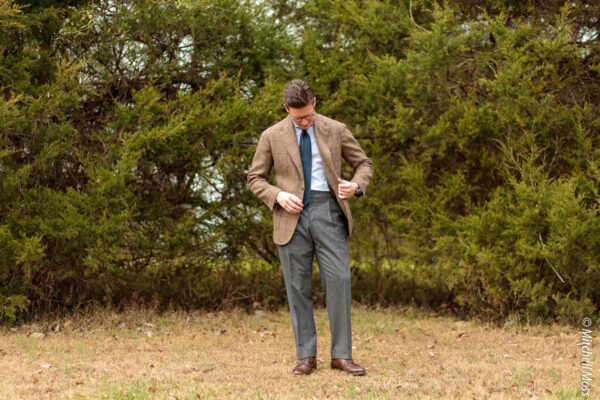
First, a brief review: What makes Neapolitan tailoring special?
The Rake gives us the 101: an extended front dart that runs to the bottom of the jacket’s skirt; a generous lapel width, with a high gorge1 and notch; a barchetta (boat-shaped) breast pocket; a lack of padding in the shoulders; and very importantly a high, snug armhole (called the scye) with a proportionally larger sleeve-head sewn into it by hand. “Attaching a larger sleeve to a smaller scye inevitably results in shirring known as ‘grinze’ — a puckered rippling, which the tailoring dilettante may view as imperfection, but the aficionado appreciates for its magnificent craftsmanship and degagé beauty,” writes the grandiloquent Rake author. In addition to all that, the jacket is made with the minimum amount of interior construction—lightweight canvas (as opposed to heavy, stiff canvas as found on some jackets), with no shoulder padding or extra layers of canvas in the upper chest.
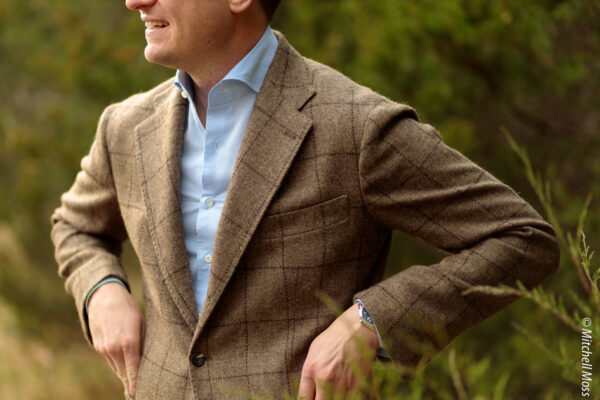
Those high armholes, somewhat extended shoulders, a roomy upper chest and that full upper sleeve all combine to create a comfortable-wearing, relaxed jacket without entirely sacrificing the shape that makes a tailored jacket so flattering. It allows for relatively unrestricted movement: the high armholes and full upper sleeve, in particular allow you to move your arms without the entire body of the jacket to move. To my eye, it gives a masculine appearance as well, which any good blazer should do, by emphasizing the chest in comparison to the waist.
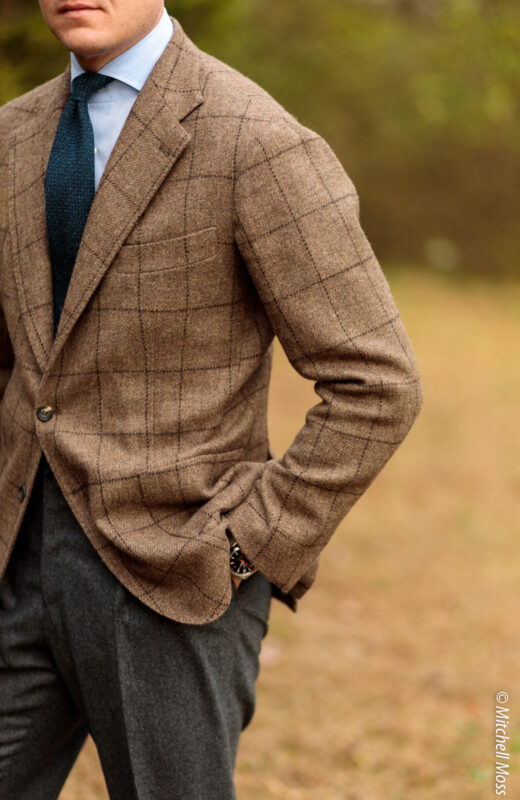
All of this is important background to describe Natalino’s new ready-to-wear collection of tailored jackets. It is the most traditionally Neapolitan jacket in this price point that I’ve come across. Not just in origin (it’s made in Naples), but in all those style details. At first I thought it had no grinze, but Nathan says it’s there, it’s just that this cloth’s thickness makes it even more subtle.
The proof of the tailoring is in the wearing
The first thing you’ll notice are the high armholes. They’re higher than every off-the-rack jacket I’ve ever tried, save perhaps for a Ralph Lauren Black Label blazer I owned nearly a decade ago. Since every man’s body is different, it’s risky to go this high outside of bespoke or made-to-measure. But if it fits, they’re glorious. They felt fine on me and were comfortable but you’ll just have to try them to figure out for yourself.
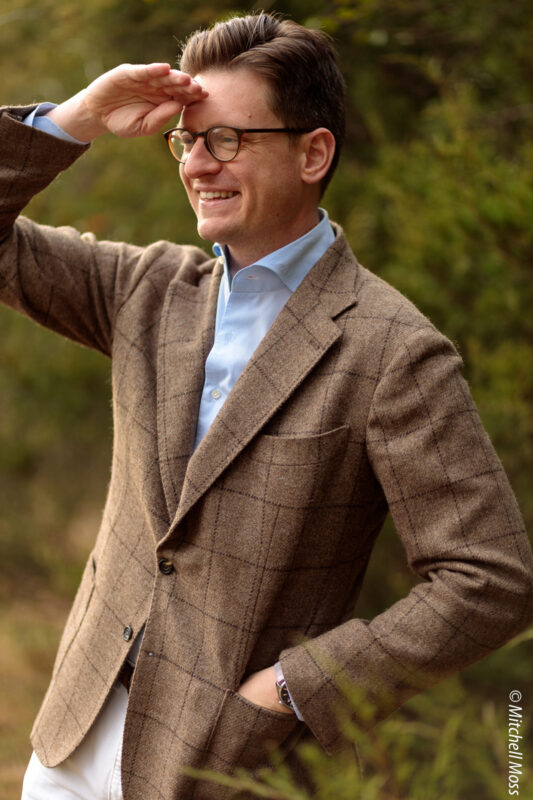
The length is just right—my size, 52R, is pegged at 77cm long (30.3”) in the back from the collar seam to the hem2. That length is just right for me (I’m 6 feet tall), just covering my rear-end, which is the rule I go by for jacket length. The front length is well proportioned, too, with the buttoning point hitting right about the natural waist, bisecting the front which gives a long lapel line (which is flattering) while also allowing the length from the button to the skirt to be proportionally long enough to lengthen the torso.
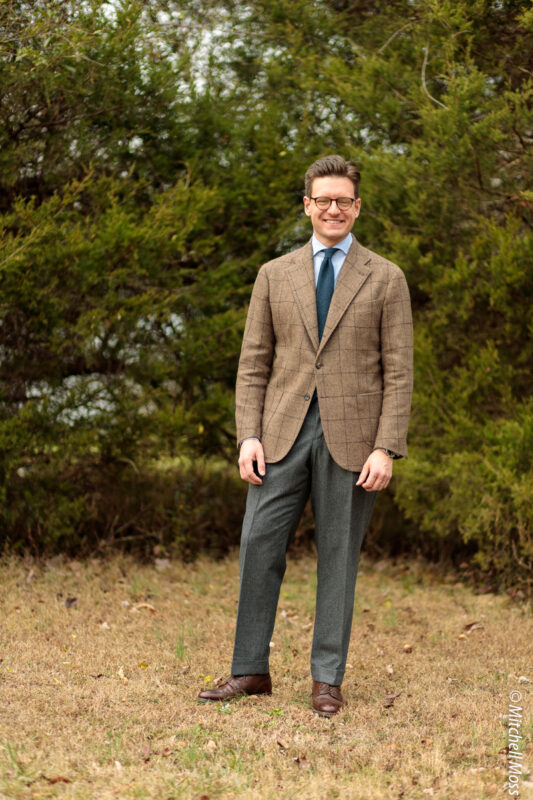
In particular I like the high gorge and wide, attractively shaped lapel—they draw your eye up from the waist and outward, emphasizing the chest and shoulders. There’s no mistaking these for some cheesy vintage 1970s jacket, and it’s that high gorge that makes the difference.
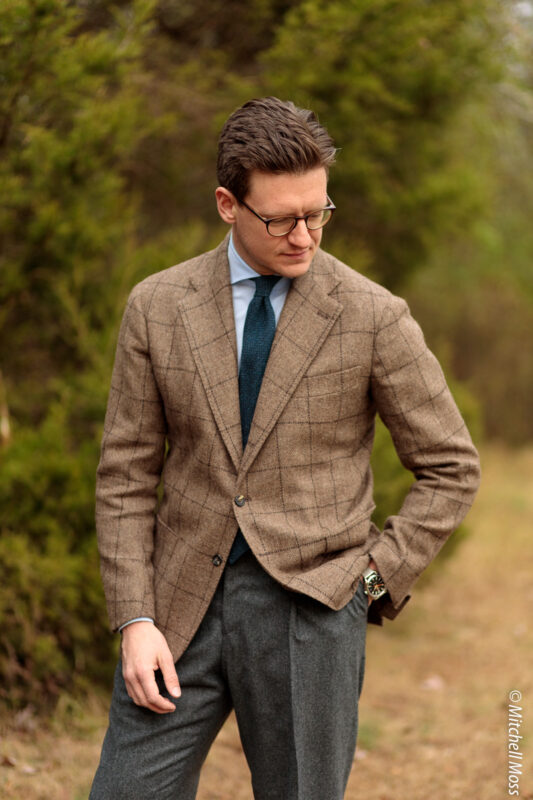
Half-canvas jackets and the specter of fusing
Made in Italy is a phrase that commands a premium. The cachet associated with Italian craftsmanship goes back to the post-War period, as illuminated by Carlo Marco Belfanti. So the prices Natalino is charging honestly seemed too good to be true (about $465USD for a blazer). They are half-canvas, which is the same quality many other makers do (SuitSupply, Spier & Mackay, even Drake’s). There is wiggle room in how to execute a half-canvas jacket, but master tailor Jeffery Diduch explains the overarching concept on this forum post. In the case of Natalino’s jackets, they use fusing the entire length of the jacket in the front, top to bottom (including in the lapels, which isn’t unheard of but is fairly unusual), then they have a single layer of lightweight chest canvas with another layer of felt that’s sewn in at the edge seams (as opposed to being stitched to the outer fabric on its entire surface, which is time-consuming). The result is the lightest possible construction you could do while still having a garment with the support needed in the chest.

Fusing has a bad rap in the menswear world because the original fusing invented in the 1960s sucked. Often over time, the glue that adhered the fusing to the outer fabric of the jacket would fail, causing ugly bubbling in the chest. But modern fusing virtually never does that—they’ve solved that problem. Even The Armoury, the high-water-mark of contemporary menswear stores makes a jacket that’s fused. It allows for the lightest possible construction in tailoring3.
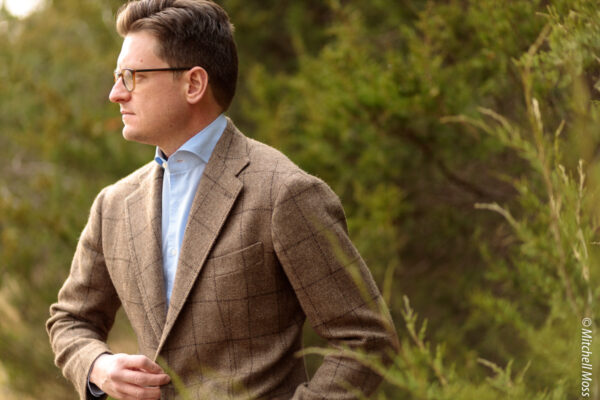
Many menswear folks who have learned everything they know about clothes online, like me, will find this to be a major turn-off. But I’m here to tell you not to worry about it. Try the jacket and if it makes you look cool, feel special and expresses your personality at a certain level, who cares if there’s fusing used?
Aside from internal construction, there is one marker of the lower cost on this jacket that many might not notice: pattern matching. On a plaid or windowpane pattern like this jacket, matching the pattern where the sleeve attaches, where the patch pockets are sewn on, and where the back panels are sewn together, as well as having symmetry on the front so that the pattern continues across the buttoning point is critical. On this jacket, it’s all pretty good but not perfect. For instance, the pattern on the front dart on the right side—which is literally just a seam sewn in the middle of an otherwise single panel of cloth—doesn’t quite align perfectly. The line of the windowpane where the sleeves attach is likewise very close but not exact. The pattern matching on the back center seam is fine, though, and the symmetry of the front is good, too, so those small details don’t bother me.
Ultimately, Natalino’s jackets are an outstanding buy, in my opinion. They offer honest Neapolitan style and authentic make at a price point that’s very compelling. The fabric selections for this first season showcase Natalino’s overall vibe, which Nathan described as “Italian without the theatrics, English without the stuffiness, and Ivy with a sharper fit.” In fact I loved the product so much that after writing this review, I decided to pay Nathan to keep it (to be transparent, he offered me a discount as a kind gesture for featuring his shop on my website; thank you, Nathan. If you want to know my policy on gifts, free products and reviews, you can read it here).
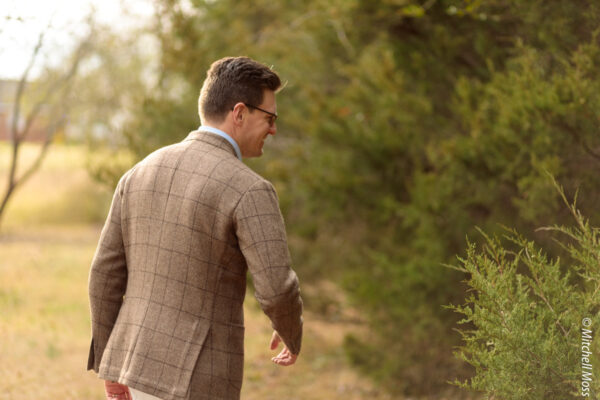
Many thanks to Nathan for sending me the jacket and trousers, and for taking the time to answer my interview questions. See our interview below.
Post-Script: The Trousers
The tailoring series I’ve been writing has focused solely on jackets. But in this case, I asked Natalino to send me a pair of their trousers to try on, too. I’d seen them on Instagram quite a bit and was impressed by how flattering they were even on some larger guys. Despite the pleat, I wanted to give them a try. This particular pair is made in Italy (while other pairs have been made in Portugal; you can tell which are which based on the sizing convention. These are sized according to Italian sizing, while the Portuguese-made are sized according to British/American sizing conventions. I took a 52 in these, which is the equivalent to a 36 in British/American sizing).
They’re a high rise, with full hips, seat and thighs that aggressively taper down. With a razor sharp crease, that fullness in the thighs disappears when viewed from the front. Under a blazer, the pleat disappears as well. Seen from the side, however, you see the full fit. Actually a buddy of mine wondered if I could have sized down based on these photos, which I would never have attempted based on my experience with every pair of dress trousers in history. Talking with Nathan about it, he suggested a size down might indeed be in order for me. So perhaps in the future I’ll give them another try.
There are two things about them I really like. First is that he sells them in finished hem lengths with a 5cm cuff, so I was able to get my normal inseam of 30 inches with a cuff already sewn without having to do that myself. Second is the high rise, which comes up to just below my navel. It’s comfortable and looks great under a jacket with open quarters like most of mine are.
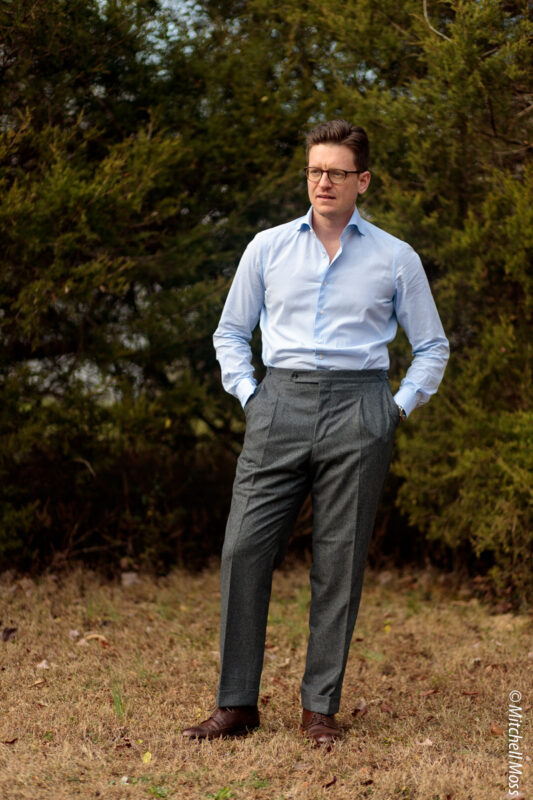
But, the fit is not for me. I imagine the smaller sizes have a more flattering taper. As it is on these, it is a dramatic, visually unappealing funnel shape seen from any angle other than the front. The upside is that you can sit down on the ground with crossed legs like Cary Grant easily, without worry of splitting a seam. But that’s not why I wear clothes. I wear them to look cool and feel special; to my eye, these make me look and feel like a 75-year-old in 1993. Everyone’s style is different, though. The quality is there. The convenience of pre-hemmed lengths is there. So give them a shot for yourself.
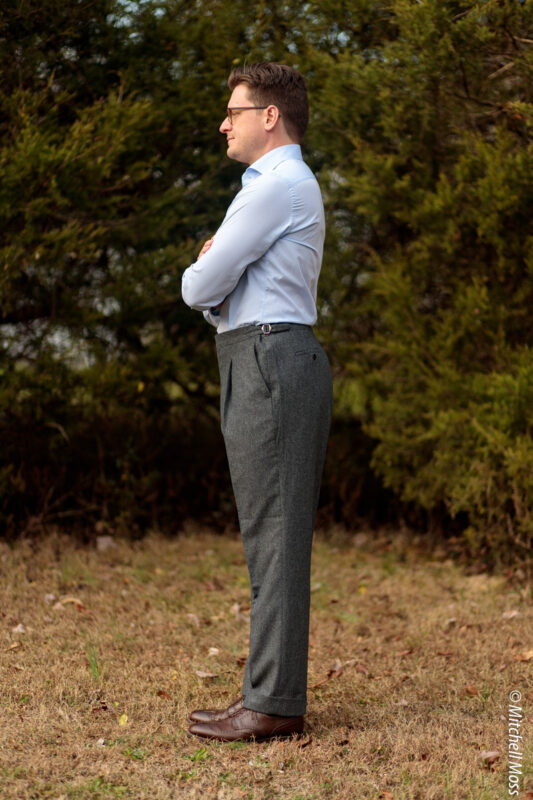
1The gorge is the seam where the collar—the part that sits against your neck in the back—is attached to the lapel. A high gorge means that seam is placed high up visually, at the level of your collar bones or thereabouts, and it means the notch that is created by the lapel meeting the collar also sits higher. Back.
2In actuality, the jacket I received is 75.5cm (29.75”) long in the back. That’s off target by slightly more than the standard deviance that factories typically allow (+/-1 cm). I am very sensitive to jackets under 30 inches long in the back, but it never felt short to me when wearing it, so I was surprised when I measured. I compared it to all my Eidos jackets, and found that the way it hung on my shoulders meant it looked just as long as any of them do, even with slightly longer back measurements. I think it’s because the collar sits lower on my neck than those jackets do. In any case, the longer front length and overall proportions of the front design are the reason it looks so good. Back.
3While I was learning more about fusing because of this jacket, I looked in the chest of my full-canvas made-in-Japan Ring Jacket blazer to see how it’s made. I was surprised to find that, in the chest, there is an ultra-light layer of fusing used in addition to the full canvas throughout the rest of the front. That’s what Jeffery D. on the post about canvassing calls skin fusing, which he says the Japanese are wont to use. The fabric is a very lightweight, open-weave hopsack-type cloth, so it doesn’t surprise me they would do that to give it stability when working with the canvas. If you’re interested, Mark Cho of The Armoury did a video about their fused jacket model. Back.
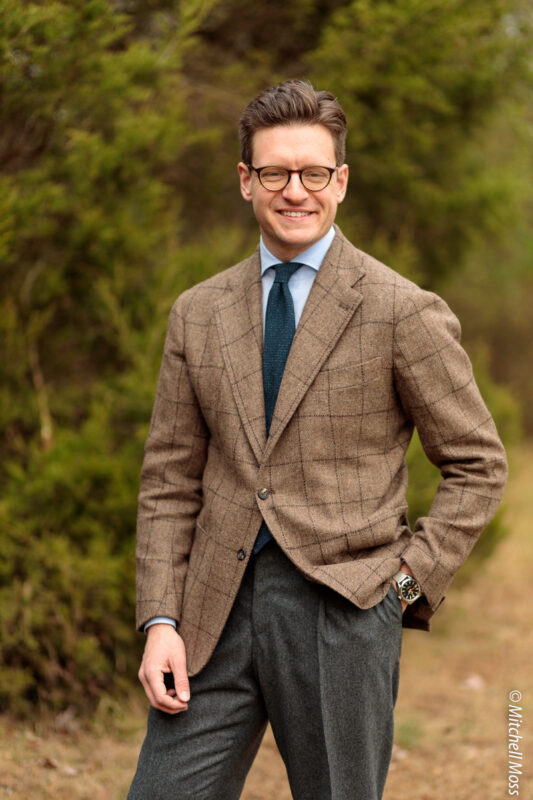
Interview with Nathan Lee of Natalino
Menswear Musings: Who’s behind Natalino? And tell us a little bit of background about yourself.
Nathan Lee: Natalino is run as an incredibly tight ship so at the moment it’s just me, Nathan, and I run the majority of the business from the photography to the website, and from working closely with our manufacturers to answering all customer queries. The packing and shipping of orders is the most time consuming part of any online retail business so outsourcing this allows me to focus on other parts of the business. The name, Natalino, is a nickname that my ex-Italian colleagues so kindly bestowed (forced) upon me.
MM: What’s your involvement with menswear before starting Natalino?
NL: I spent five years working as an investment banker in London so not much. It counts for little but I was a fervent consumer of mostly bespoke tailoring from the UK and Italy and I was fascinated by the clothes. I decided to quit my job and to fully commit myself to learning as much as I could about the industry and how one might actually run a clothing business, visiting all the trade fairs and speaking to as many people in the industry as possible.
MM: And then what started you on the path to starting Natalino?
NL: A burning passion for classic menswear and an acute desire to introduce something fresh and interesting to the market without a single negroni or cigar in sight.
MM: That’s interesting, what is it about the negroni and cigar you don’t like? Or maybe put a better way: how are you trying to position your aesthetic/vibe in contrast to that?
NL: Don’t get me wrong, I love a good negroni and a cigar myself every now and again. I just think it’s overdone in the classic menswear scene and incredibly cheesy. It’s very ‘lifestyle’ and suggests someone who dresses like a “gentleman” should enjoy the “finer things in life.” It doesn’t sit well with me because there is a connotation of being part of an exclusive set.
I believe our product is more democratic in that it’s accessible to a wider range of people regardless of income or location. I try, therefore, to position Natalino in such a way to get this message across, be it in our imagery or through our customer interactions.
MM: What were your first product categories, and how have you grown it since then?
NL: It started with a very streamlined capsule collection of polos, shirts, knitwear, trousers, and an overcoat. Since then, we have gradually broadened the offering whilst improving the quality of the make. Most recently, we introduced our new sports jacketing which adds another dimension and allows the ethos and taste of the brand to come through with much greater clarity.
MM: What is your raison d’etre for Natalino?
NL: To offer well-made and tastefully designed classic clothes that don’t break the bank. In my experience, you would either spend less on clothes that were less considered and/or of low quality, or you lived off instant noodles for a month to afford good-looking, well-made garments.
MM: How would you describe the style of your garments?
NL: Italian without the theatrics, English without the stuffiness, and Ivy with a sharper fit.
MM: What makes your garments special? What sets them apart?
NL: A delicate combination of high-quality make, tasteful design, considered fit, and excellent value for money.
MM: Who do you think of as your customer and how do you meet his needs and wants?
NL: Our customer ranges from the person who is exploring the classic menswear aesthetic for the first time to the seasoned veteran who enjoys complementing their bespoke or made to measure wardrobe with ready to wear items that fit in harmoniously. There are also a great many who do not live in large cities that are frequented by travelling tailors and therefore, do not easily have access to made to measure or bespoke. Ultimately, our customer lives in the real world and wants to wear durable, good-looking clothes that fit well without having to obtain a small loan or be part of an exclusive set.
MM: What kind of quality are you producing, and what sets your garment apart? (i.e. Is there handwork in any special places or any special kind of fabrics used, fancy stitching, etc.?)
NL: My focus has always been on combining high quality make and superb fit with excellent value for money. That means we don’t necessarily have hand-sewn button holes on our jackets or shirt collars sewn in by hand. Having said that, our trousers are made properly with canvas in the waistband which is also sewn on using a concealed seam. Our shirt sleeves are set in by hand with the fullness of the sleeve gathered by hand before being sewn over by machine, with the same technique utilised in our jacketing. Whilst making in Italy is certainly no guarantee of quality, we work with manufacturers who have deep-rooted expertise in producing their one specific garment which cannot easily be replicated – for example, you cannot simply take out the padding and use a lighter canvas in a jacket and expect it to fit as well or be as comfortable as one that has been made by Neapolitans in the one style with which they’re familiar, using techniques that have been passed down through generations. I’m certainly not out to make the cheapest garment possible but equally, I recognise there are diminishing marginal returns as you increase quality above a certain point.
MM: Are there any other special things about your clothing you want to say?
NL: It’s a considered collection of well-made, robust and good-looking clothes, designed to fit properly. Most importantly, it’s neither too fussy nor overly curated, and I hope this comes through clearly with everything we do.
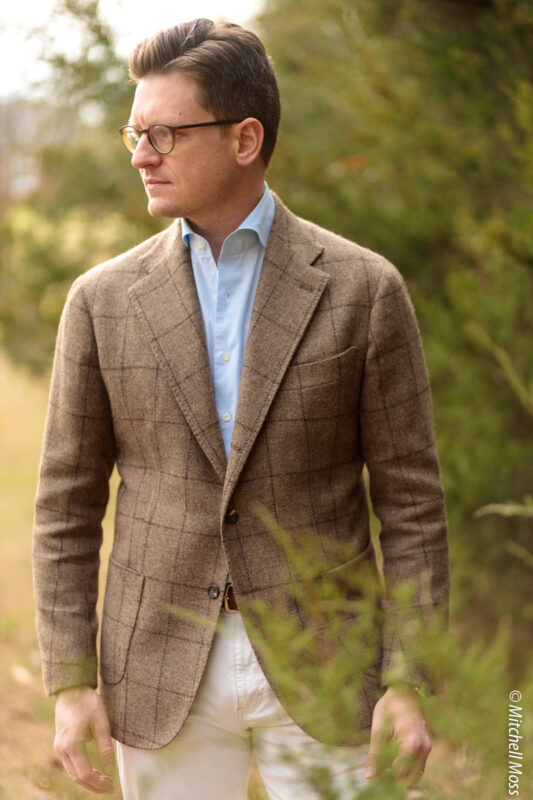
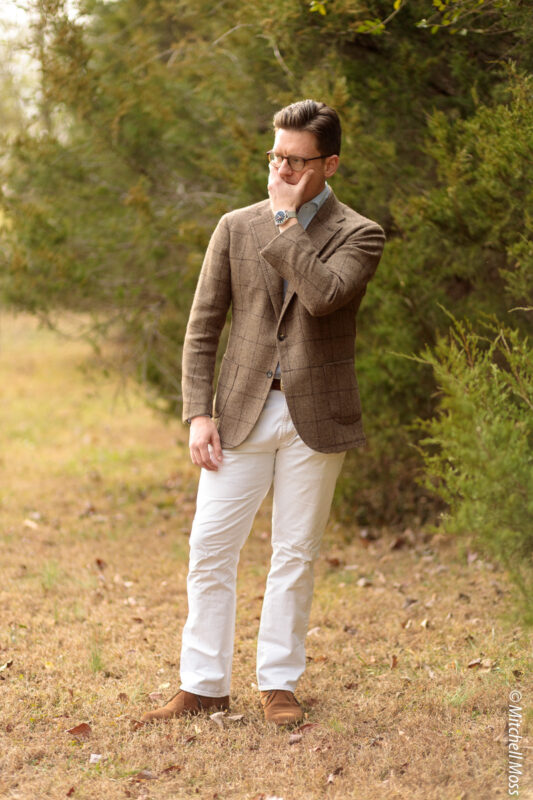
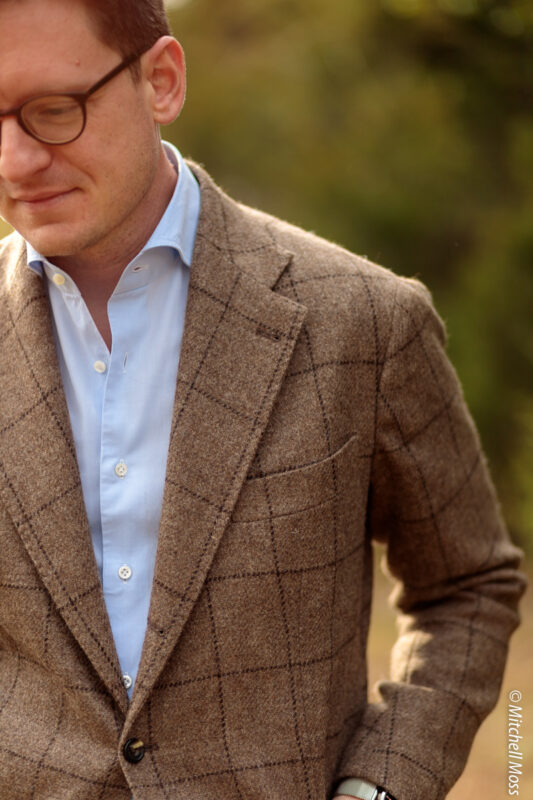
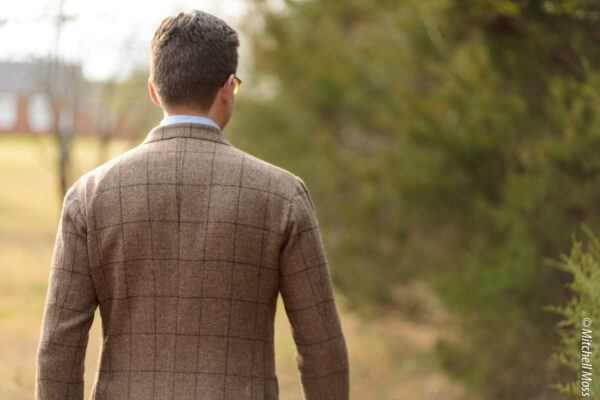
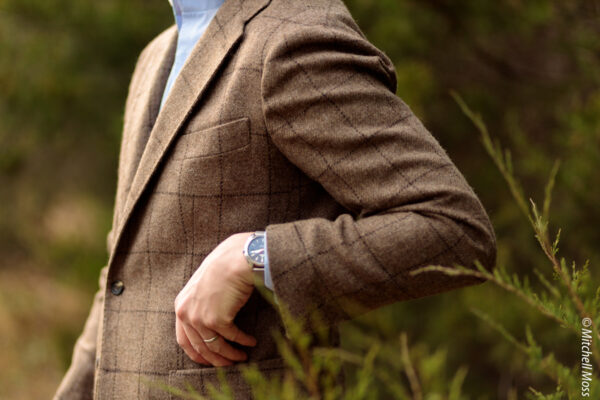
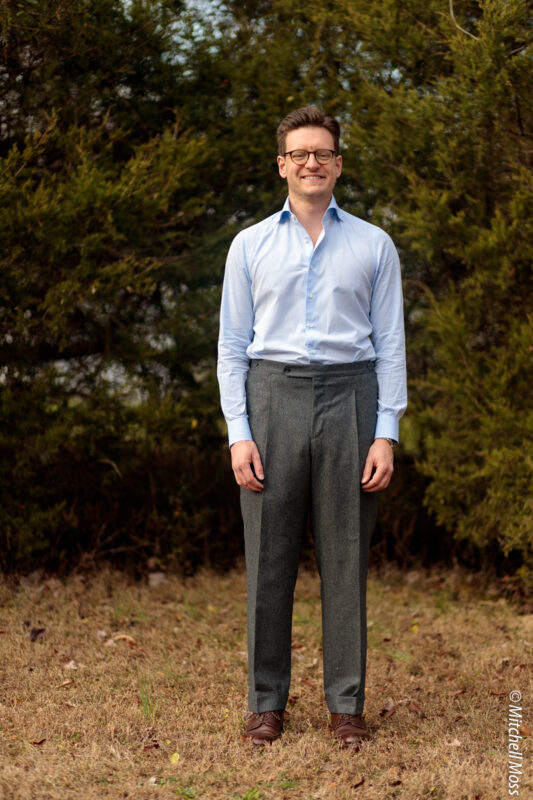
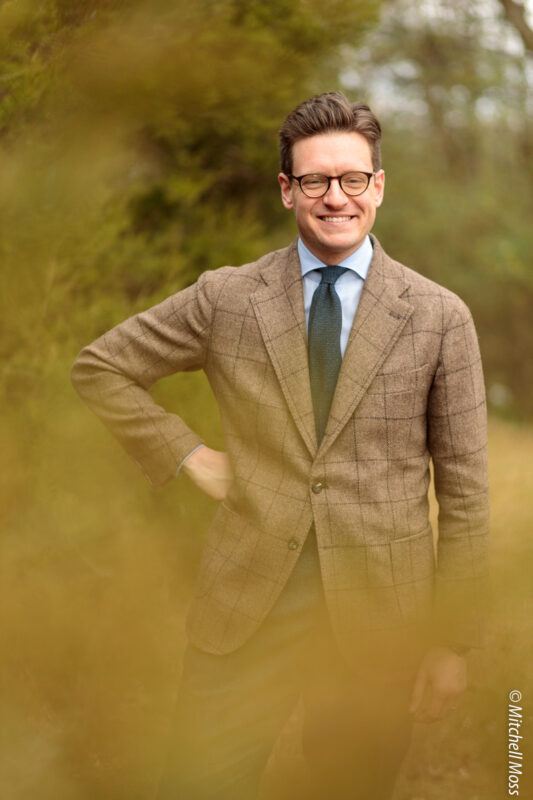
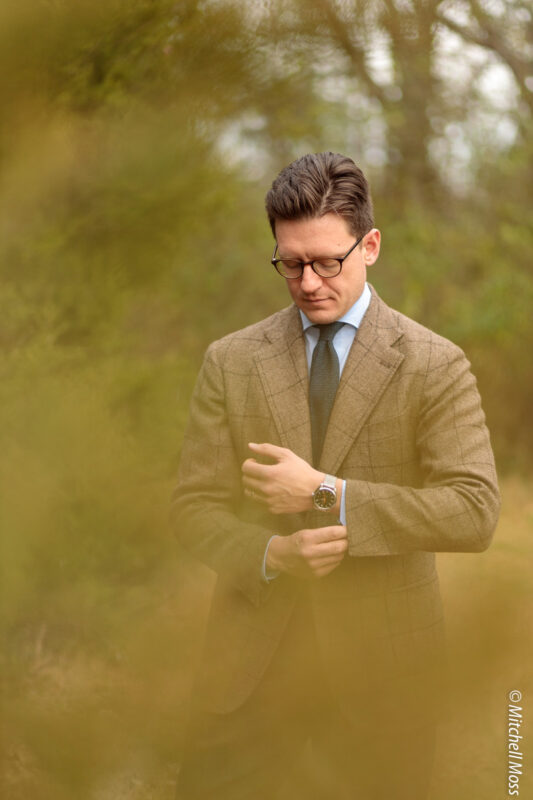
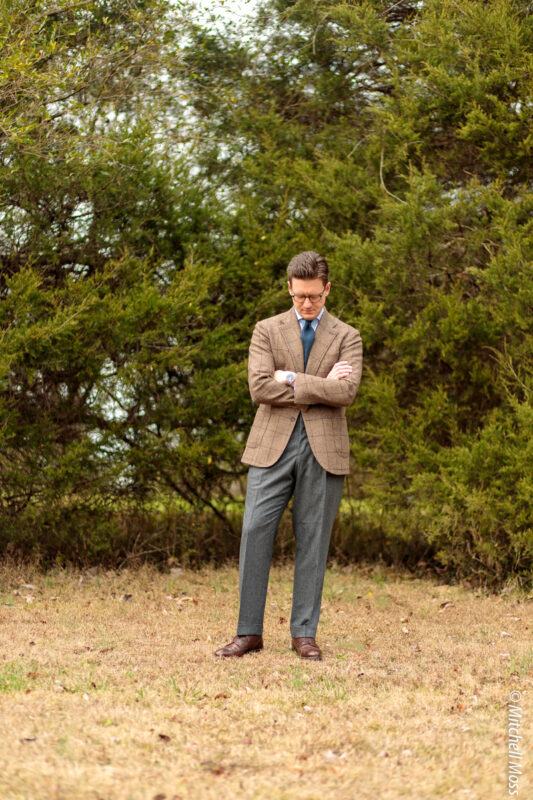
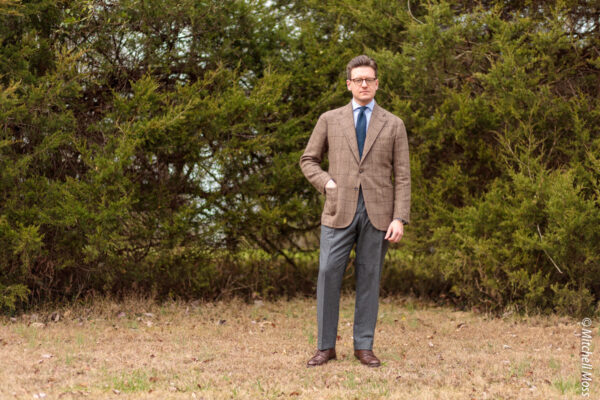
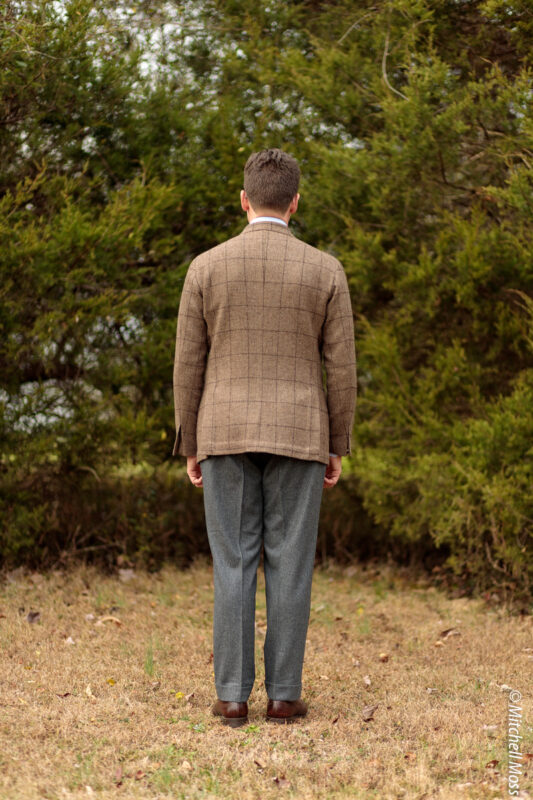
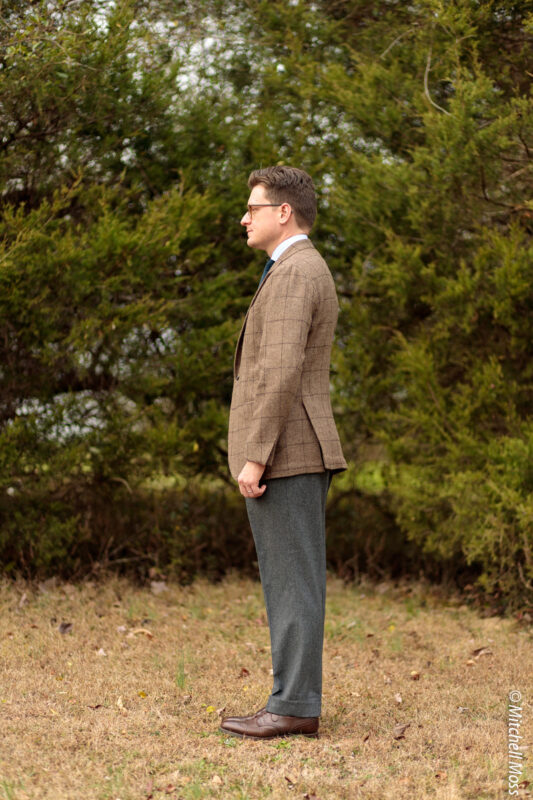
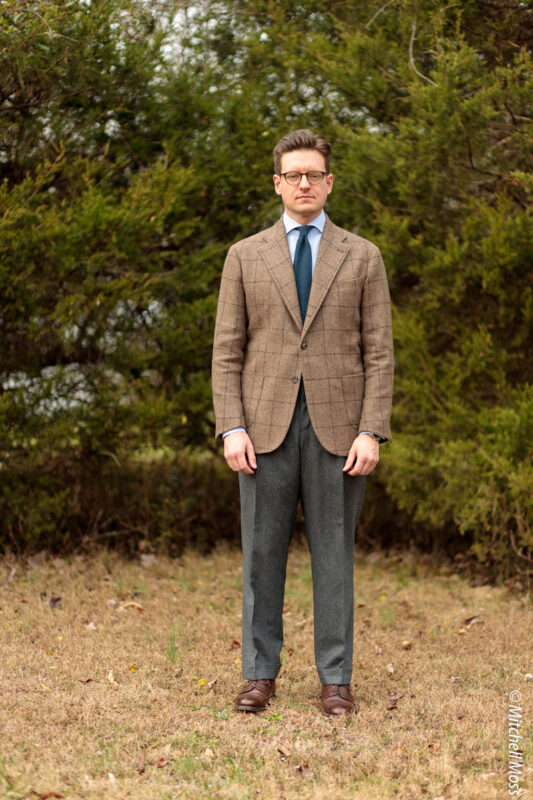


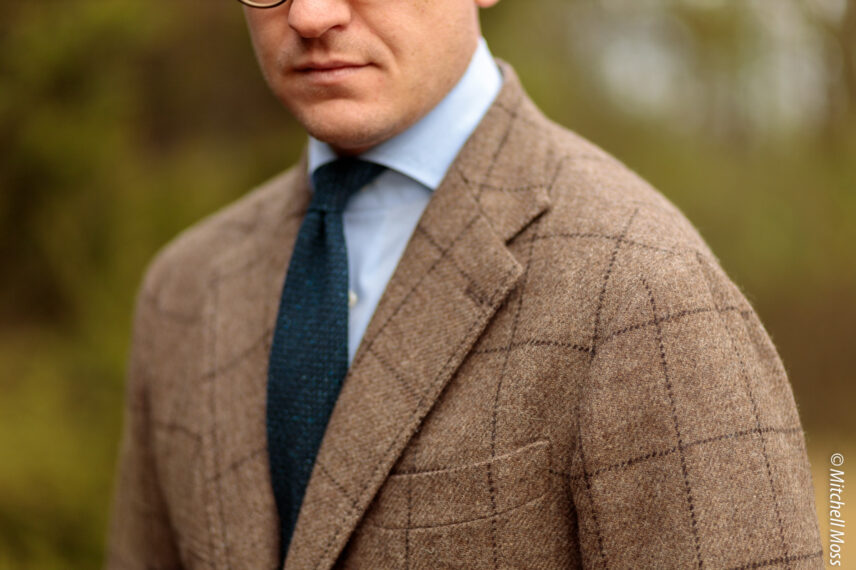
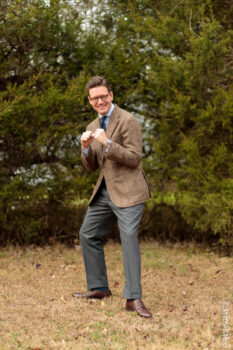

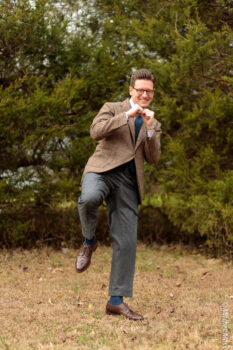

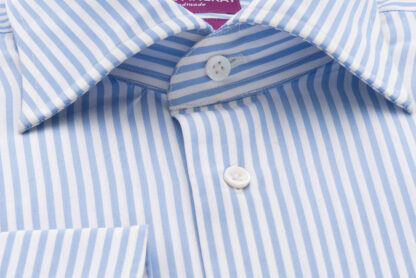
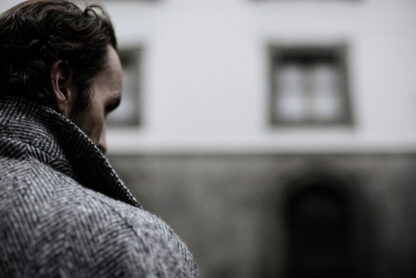
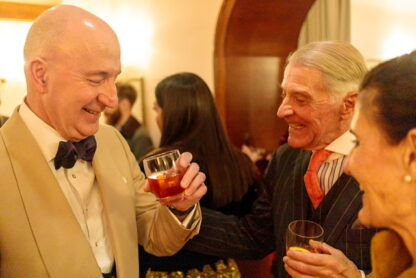
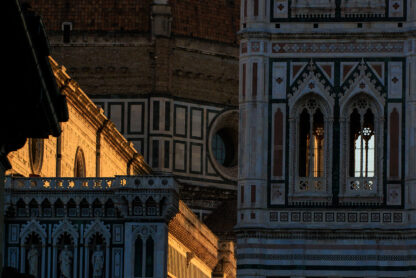
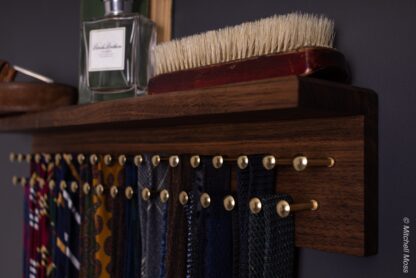
Nice piece. Respectfully disagree about the trousers: they look great on you with the high rise and pleats.
Thank you JJ. If I try the next size down, I’ll be sure to photograph them and write my opinions.
Two quick comments:
1) The trousers look a shade baggy from certain angles, but overall I have to agree with JJ Katz above – they look great. If I may offer a piece of unsolicited advice, don’t worry so much about looking “old”. Most well-dressed men tend to be older.
2) I was struck by your comment ” Unfortunately, wearing a suit or even just a blazer with tailored trousers is increasingly seen as being so dressed up as to be remarked-upon in many settings. Nobody wants to be overdressed” – those of us who enjoy dressing well should accept the reality that our culture has become slovenly. It took me years to realize that I should simply wear what I enjoy wearing (without slipping into costume or gross inappropriateness) and let the chips fall where they may. We shouldn’t have to answer to slobs with a chip on their shoulders. “Why are you so dressed up?” often means “Do you think you are better than me? Huh?” We don’t need to answer people like that, but if we do, here is a possible list of responses in increasing order of snarkiness:
a) Because I enjoy it
b) Because I am a grownup
c) Because I am a professional and wish to look like one
d) Because I am on my way to my parole hearing
Cordially,
DFI
Well said, Daniel.
30” inseam for a height of 6’? Those are really short legs.. I guess that’s the reason you rarely post pictures of you standing still forward like those typical CM selfies?
I like to think of it as having a long torso haha.
Hi Mitchell,
How’s the jacket sizing? I usually wear a size 38 in Ring Jacket armoury model and 40 in regular Ring jacket. Would you recommend getting your regular size?
It fits true to size, so go for the same size as your Armoury jacket size.
just as you say, I had to size down on the trousers and let out the waist. Wile I like the make, the cut is probably not for me. I’d prefer a slimmer thigh with the same leg opening (i.e. less taper, a straighter silhouette). I am just thinking of getting a jacket though, since I need some sommer jackets, got one from Suitsupply but didn’t find many others I liked.